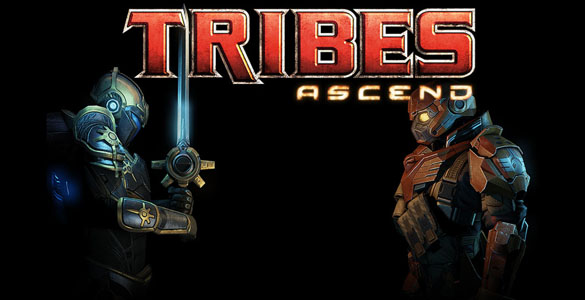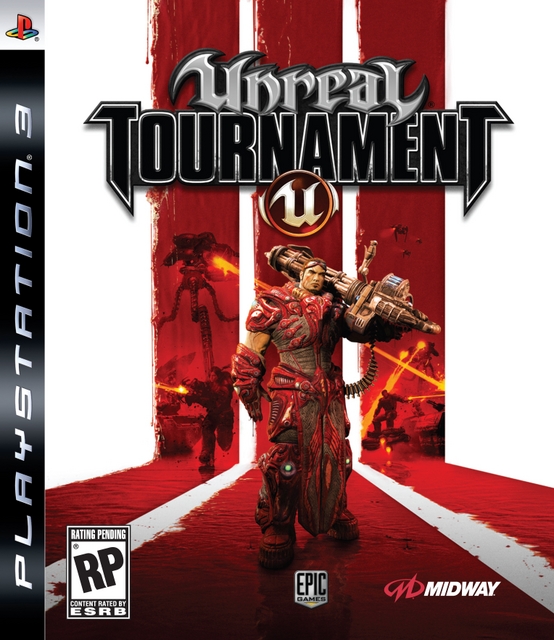One of the most enjoyable gaming experiences I’ve had in recent memory is with a well known and much raved about series I’m sure everyone knows called Bioshock. Combining solid FPS gameplay with RPG elements, an elaborate and interesting world and solid storyline; the Bioshock series has quickly become a favourite of gamers across all platforms. The following is a glance at the different elements of Bioshock from weapon systems to its rich world and all the awesome in-between.
Enrapture
The Bioshock series takes place in an underwater, dystopian, pseudo-50s city called Rapture. The city was built on the bottom of the ocean with the most advanced technology of its time. Meaning the city has a distinct post-war feel to it as is seen in everything from the advertisements to the architecture of the city. Rapture was built with the best of intentions and promised to be a utopia for intellectualism and the advancement of mankind yet eventually crumbled into a state of dystopia as ideals like this are wont to do due to the base nature of mankind. The Rapture the players visit is a shell of its former self, falling apart at the seams and full of the now twisted remnants that were once it’s citizens.
This is just a basic explanation of the setting of the Bioshock series, the games themselves have incredibly in-depth storylines (which I won’t reveal here) full of post-war styled characters and machiavellian twists. The story will take the player on a roller coaster of events, emotions and intrigues all the while giving a multitude of ways to upgrade your character and slaughter your enemies.
The scientists in Rapture stumbled across a sea slug native to the depths of the ocean around Rapture, this sea slug produced a substance named ADAM which allowed them to retroactively alter the genetics of humans. Such a discovery quickly threw into production a series of modifications which allowed people to alter their DNA to give them superhuman abilities through the use of items called Plasmids and Tonics. People could now shoot lightning from their fingertips, run faster and for longer or even influence other’s minds.
Another feature of the Bioshock series which complemented its immersive nature greatly was the audio within the games. It’s one thing to walk down creepy dark, leaky corridors. It’s another thing altogether to hear all the creaks and groans of the city as it falls apart, the water dripping and rushing through cracks in bulkheads, the maniacal chattering or laughter of nearby insane citizens all the while hearing the near delusional happiness of 50s style radio ads being blared out by vending machines:
"My daddy's SMARTER than Einstein, STRONGER than Hercules and can light a fire with a SNAP of his fingers. Are you as good as my daddy, Mister? Not if you don't visit the Gatherer's Garden, you aren't! Smart daddies get spliced, at the Gardens!"
A world this rich is able to pull players into it regardless of how little they pay attention to the story. The story and history is never shoved in the player’s face and it is always your own choice as to how much you wish to learn about what happened to Rapture, the gameplay is never stopped to force the player to pay attention yet it becomes hard to not become pulled into the insanity held within Rapture’s walls.
Man as God

Bioshock gives the player two weapon systems to decimate their enemies with. On one hand the player is given your standard fare shooter weapons (revolvers, shotguns, machine guns etc) but with a post-war makeshift twist. On the other hand players have Plasmids, which allow them to use a variety of superhuman abilities like lighting their enemies on fire or electrocuting them. This allows players to mix and match their two weapon systems strategically to kill. For example, the first combination players are taught is to stun enemies with a bolt of electricity which will stun the target then to finish the job with a swing from your trusty industrial wrench. This gives the players an effective low resource attack which can take down enemies.
Key to this dual weapon system is a dual resource system, ammo for the weapons which includes three different types for most guns. For example, the machine gun has regular, armour piercing and anti-personnel ammo which can be changed as the situation requires. Alongside this is the Eve system which acts like a mana system for your plasmids, requiring an Eve hypo (syringe) to refill your Eve levels just like a mana potion from traditional RPGs. This dual weapon system felt like it was almost borrowed from a high fantasy game yet felt right at home in Rapture and complemented the gameplay perfectly, additionally the concept of ADAM and Plasmids also provides a great amount of Bioshock lore and storyline.
Using two weapon systems side by side like this give players a huge variety of ways to kill their enemies and allows you to cater to any situation that arises. Although at the same time this can cause players to identify an effective method to kill with and use it constantly throughout the majority of the game. This can be a good or bad thing depending on the player you talk to.
Enter the camera system. In the first Bioshock players were given a still camera with which they could take photos of enemies, using the camera to “research” their enemies would allow players to unlock damage bonuses or even entire tonics. Bioshock 2 gave the players a video camera instead which directly tackled the issue of players progressing through the entire game with two or three attacks. The video camera required the player to take footage of enemies and perform as many different attacks as possible on the target before they died, the more attacks the player used the more valuable the research and the faster they were able to unlock bonuses. The player was still able to research enemies with only a few attacks so that players who preferred that play style could continue with it yet for players who wanted to use more abilities the video camera provided the means by which they would get rewarded for downing their enemies creatively.
Advancement of Man
Bioshock takes the player on an adventure of epic proportions, all the while the player is able to upgrade and advance their character using systems commonly seen in RPGs. Although Bioshock is first and foremost an FPS the character progression and economics systems provide a simplified and streamlined way to provide the player with customisation. These systems eliminate the majority of the nitty gritty details that are prevalent in many RPGs such as gear, stats and levelling.
The player has no inventory per se, just a screen which lets them switch ammo types quickly. All currency counters appear on screen momentarily after receiving money or ADAM then fade away. These can be checked in the pause menu which frees the HUD from unnecessary clutter. What it comes down to is that the majority of character progression comes from attaining either of the two forms of currency or using the camera. This means players are not constantly concerned about when their next level is coming or when they need to go sell junk to create money. The shopping and customisation in Bioshock is as simple as:
See a vending machine. Do I have [insert currency]? Yes! = Go buy stuff! No = keep going till I find another shop.
The camera research system previously talked about will at different levels of research on targets provide the player with simple damage increase stats. E.g. The first level of research on an enemy may provide a 10% damage increase on that target in the future. This is as heavy as the stats get in Bioshock and once achieved is quickly forgotten and boils down to “I kill those dudes faster now”.
ADAM is periodically attained and can be spent at Gatherer’s Garden vendors to purchase Plasmids and Tonics which boils down to your RPG ‘weapon shops’. Although all Plasmids are primarily offensively orientated, Tonics give players their character functionality and quirks. For example; one tonic allows players to gain more health from food in the world, another will let the player gain some Eve whenever using a Health Kit.
With these systems in place Bioshock is setup to strip messy character advancement systems down to their core and allow upgrades and customisation to be done by quick choices which don’t slow the game pace down or affect player immersion. This helps the series be more accessible to a wider audience of not just more casual gamers but also hardcore gamers who don’t want to screw around with a ton of customisation options.
The Future is Rapture!
Bioshock 2 introduced multiplayer to the series, with multiplayer character customisation and progression through your standard fare deathmatch and teamplay shooter game types. This leaves a question in my mind though. Considering how much of a solid single player experience the first title was and how well implemented the multiplayer was without subtracting from the main storyline in Bioshock 2... how likely is it that we will ever see a co-op mode for Bioshock? (I told you I was a whore for co-op!)
I figure that it’s potentially viable without subtracting from their well crafted storyline for example, the player is never forced to watch any storyline events in the campaigns (players can run around and loot or do whatever while the antagonists rant and waffle on about stuff). Adding even a second player allows more combinations of ability and weapon attacks. Can you say combined plasmid attacks? Players could even customise their characters differently to make the most of all the plasmid/tonic setups or even create twin characters to effectively take out enemies how they want. For example, picture two players with tonics that cause them to move quietly, do increased melee damage and go invisible when standing still causing their game of Bioshock to turn into a stealth assassination game!
Currently in production is
Bioshock Infinite which is said to be a spiritual prequel to the Bioshock games. Set in a flying city before Rapture was built and ADAM was discovered. Sounds interesting but I guess only time will tell.
The Bioshock series quickly became one of my favourite series of games for a plethora of reasons. It’s inspired design shows how simplicity can sometimes give so much more than all the games out there trying to do everything at once. It’s rich and fantastical world gives a huge amount of depth to the series and provides an excellent setting for the well thought out storylines. Bioshock will definitely be a series to keep your eye on in the future.

















